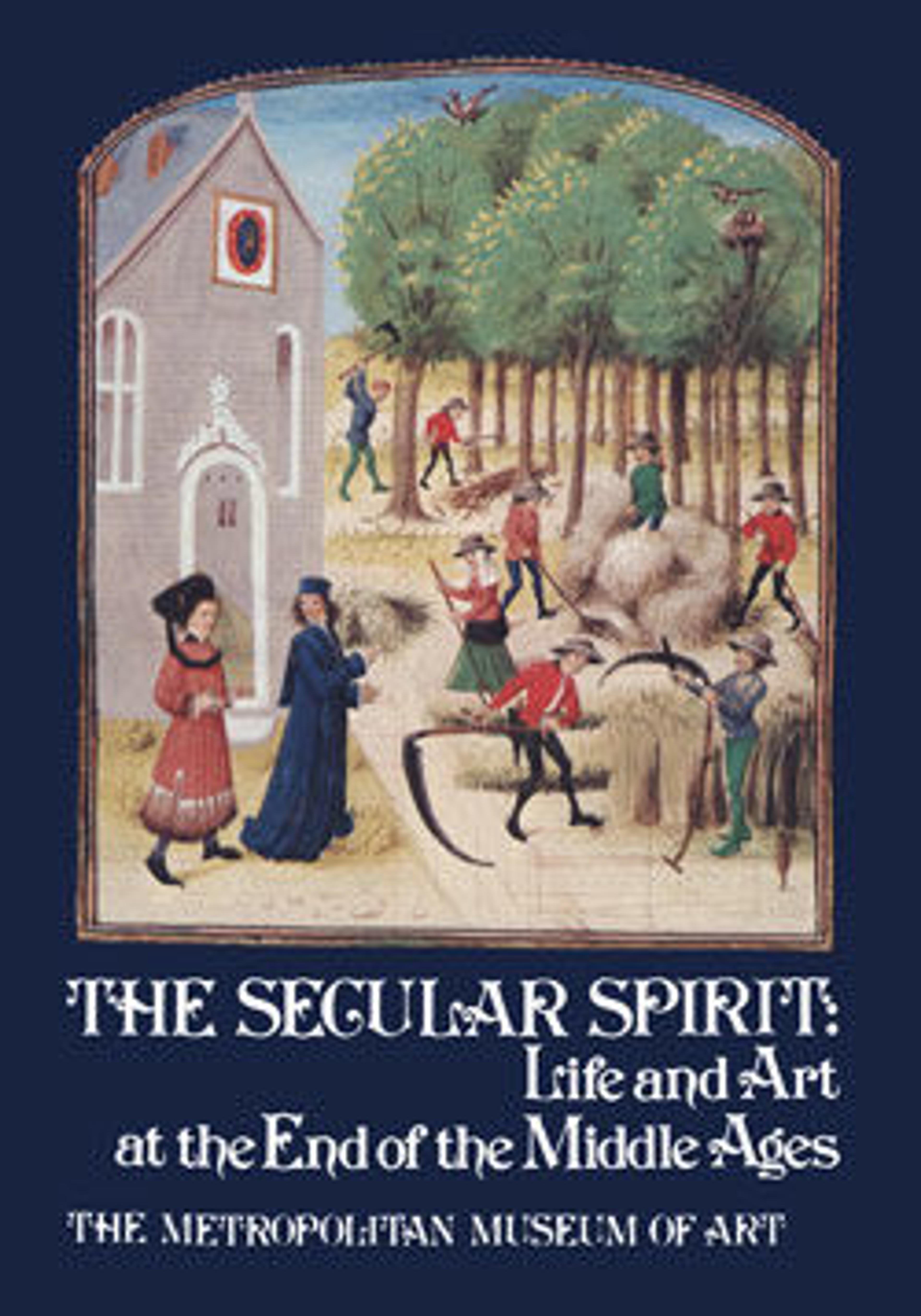Serving Knife
This serving knife, and its pair (see ac. no. 51.118.2), has been attributed to Hans Sumersperger of Hall, the knifesmith of Maximilian I, at whose splendid court the influence of northern late Gothic and Italian Renaissance met. This master’s name appears in the royal accounts of 1492-1498. The brass handles are inlaid with bone, walnut, and carved mother-of-pearl. The steel blades are flat and thinly ground. Although there are no maker’s marks on either the handles or the blades, the style, design, and iconography connect these knives with other works by Sumersperger. Both these knives are related to hunting knife sets of a Burgundian type that became popular after his marriage to Mary of Burgundy. It is possible that these two serving knives (the broad tongue-shaped blade of one has been repaired) were themselves part of a complete hunting set which would have included two single-edged knives of varied size for skinning and cutting, a more delicate table knife and fork, and knives for serving pieces of meat while on the hunt. These knives would have been used either for the hunt or for the banquet. One knife would have been used to slice the meat, the other as a salver to carry the meat to the trencher or plate.
Artwork Details
- Title:Serving Knife
- Date:15th–16th century
- Culture:Austrian
- Medium:Steel, brass, wood, bone, mother-of-pearl
- Dimensions:Overall: 17 7/16 x 2 11/16 x 5/8 in. (44.3 x 6.9 x 1.6 cm)
hilt: 4 11/16 x 2 3/16 x 5/8 in. (11.9 x 5.6 x 1.6 cm) - Classification:Metalwork-Steel
- Credit Line:Rogers Fund, 1951
- Object Number:51.118.3
- Curatorial Department: Medieval Art and The Cloisters
More Artwork
Research Resources
The Met provides unparalleled resources for research and welcomes an international community of students and scholars. The Met's Open Access API is where creators and researchers can connect to the The Met collection. Open Access data and public domain images are available for unrestricted commercial and noncommercial use without permission or fee.
To request images under copyright and other restrictions, please use this Image Request form.
Feedback
We continue to research and examine historical and cultural context for objects in The Met collection. If you have comments or questions about this object record, please contact us using the form below. The Museum looks forward to receiving your comments.
